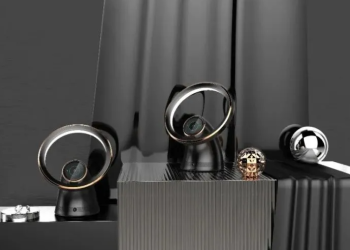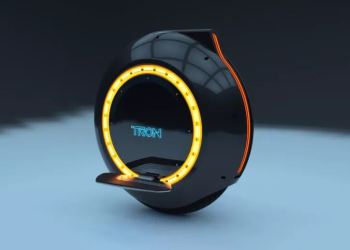In today’s world of audio entertainment, the term “Hi-Fi” or “High-Fidelity” is often thrown around, but what exactly does it mean? Let’s delve into the intricacies of Hi-Fi audio, exploring its history, components, quality metrics, and the experience it offers.
Introduction
Defining Hi-Fi Audio: Hi-Fi, short for High-Fidelity, refers to the faithful reproduction of sound with minimal distortion or noise, providing a lifelike audio experience that closely resembles the original recording.
Importance of High-Fidelity Sound Systems: In an era where music and audio content play significant roles in our lives, investing in a high-quality audio setup can enhance our listening experiences, whether it’s enjoying music, movies, or gaming.
History of Hi-Fi Audio
Origins of High-Fidelity Sound: The pursuit of high-fidelity audio dates back to the early 20th century, with inventors and audio enthusiasts striving to replicate sound accurately through advancements in technology.
Evolution of Audio Technology: From the invention of the phonograph to the development of vacuum tube amplifiers and the introduction of digital audio formats, the history of Hi-Fi audio is a timeline of innovation and refinement.
Key Components of Hi-Fi Audio Systems
Speakers: Speakers are the final link in the audio chain, converting electrical signals into audible sound waves. They come in various designs such as bookshelf, floor-standing, and in-wall speakers, each offering unique sonic characteristics.
Amplifiers: Amplifiers play a crucial role in powering speakers and shaping the sound. Whether it’s solid-state or tube amplifiers, choosing the right amplifier can significantly impact the overall sound quality.
Source Components: Source components, including CD players, turntables, and streaming devices, provide the audio signal to the system. Each source component contributes to the overall sound quality and listening experience.
Cables and Interconnects: Often overlooked, cables and interconnects transmit audio signals between components. High-quality cables with proper shielding and connectors can minimize signal loss and interference, preserving audio fidelity.
Understanding Audio Quality
Frequency Response: Frequency response refers to the range of frequencies a system can reproduce accurately. A flat frequency response ensures faithful reproduction across the audible spectrum.
Distortion: Distortion occurs when the audio signal deviates from its original form, resulting in unwanted artifacts or coloration. Minimizing distortion is crucial for maintaining audio fidelity.
Signal-to-Noise Ratio: The signal-to-noise ratio measures the level of desired audio signal compared to background noise. A higher signal-to-noise ratio indicates cleaner audio reproduction with less audible noise.
Dynamic Range: Dynamic range represents the difference between the quietest and loudest sounds in an audio signal. A wide dynamic range allows for greater detail and realism in audio playback.
Types of Hi-Fi Audio Systems
Stereo Systems: Stereo systems consist of two speakers and a stereo amplifier, providing a two-channel audio experience with distinct left and right channels.
Surround Sound Systems: Surround sound systems utilize multiple speakers placed strategically around the listener to create an immersive audio environment, ideal for movies and gaming.
Integrated Audio Systems: Integrated audio systems combine various audio components into a single unit, offering convenience and simplicity without compromising sound quality.
Building a Hi-Fi Audio Setup
Budget Considerations: Building a Hi-Fi audio setup can be tailored to fit any budget, with options ranging from entry-level setups to high-end audiophile systems.
Room Acoustics: Room acoustics play a significant role in audio playback, affecting sound quality through reflections, absorption, and resonance. Proper acoustic treatment can optimize the listening environment.
System Compatibility: Ensuring compatibility between audio components is essential for seamless integration and optimal performance. Paying attention to specifications and connectivity options is crucial when building a Hi-Fi system.
Advantages of Hi-Fi Audio Systems
Superior Sound Quality: Hi-Fi audio systems prioritize sound quality above all else, delivering detailed, accurate, and immersive audio reproduction that elevates the listening experience.
Immersive Listening Experience: Whether it’s experiencing the nuances of a live concert or feeling the impact of a movie soundtrack, Hi-Fi audio systems create immersive listening environments that transport listeners into the heart of the action.
Longevity and Durability: Investing in quality audio components not only ensures superior sound quality but also longevity and durability, providing years of enjoyment and entertainment.
Common Misconceptions About Hi-Fi Audio
Expensive Price Tags: While high-end audio equipment can come with hefty price tags, there are affordable options available that deliver impressive sound quality without breaking the bank.
Complexity of Setup: While building a Hi-Fi audio setup may seem daunting at first, advancements in technology and user-friendly interfaces have made the process more accessible than ever.
Diminishing Returns: While there are diminishing returns associated with higher-priced audio equipment, the difference in sound quality can still be significant for discerning listeners with trained ears.
Hi-Fi Audio in the Digital Age
Digital Audio Formats: With the advent of digital audio formats such as FLAC and DSD, Hi-Fi audio enthusiasts have access to high-resolution audio files that preserve more detail and fidelity than traditional formats.
Streaming vs. Physical Media: While streaming services offer convenience and accessibility, physical media formats like vinyl records and CDs continue to appeal to audiophiles seeking the highest possible sound quality.
Hi-Res Audio: Hi-Res audio formats, characterized by higher sampling rates and bit depths, offer an even greater level of detail and fidelity, providing an unparalleled listening experience for audiophiles.
Maintaining Hi-Fi Audio Systems
Cleaning and Dusting: Regular cleaning and dusting of audio components, including speakers, amplifiers, and source components, can prevent buildup and maintain optimal performance.
Regular Maintenance Checks: Performing routine maintenance checks, such as inspecting cables and connectors for damage or corrosion, ensures trouble-free operation and prolongs the lifespan of Hi-Fi audio systems.
Upgrading Components: As technology advances and new audio formats emerge, upgrading individual components can enhance the performance and capabilities of Hi-Fi audio systems, keeping them up-to-date with the latest innovations.
Future Trends in Hi-Fi Audio
Wireless Connectivity: Wireless audio technology, including Bluetooth and Wi-Fi, continues to evolve, offering convenient solutions for streaming audio without compromising sound quality.
Smart Integration: Integration with smart home systems allows Hi-Fi audio setups to be seamlessly integrated into the connected home environment, providing intuitive control and automation options.
Sustainable Materials: With an increasing focus on sustainability, manufacturers are exploring eco-friendly materials and manufacturing processes to create Hi-Fi audio products that minimize environmental impact.
Conclusion
In conclusion, Hi-Fi audio systems represent the pinnacle of audio reproduction, offering unparalleled sound quality, immersive listening experiences, and lasting enjoyment. Whether you’re a casual listener or a dedicated audiophile, investing in a Hi-Fi audio setup can transform the way you experience music, movies, and more.

FAQs After The Conclusion
1. What makes Hi-Fi audio systems different from regular audio systems? Hi-Fi audio systems prioritize sound quality and fidelity, utilizing high-quality components and precise engineering to reproduce audio with minimal distortion or coloration.
2. Are Hi-Fi audio systems only for audiophiles? While audiophiles may appreciate the nuances of Hi-Fi audio systems, anyone can benefit from the superior sound quality and immersive listening experiences they offer.
3. Do I need special training to set up a Hi-Fi audio system? Setting up a Hi-Fi audio system is relatively straightforward, with many resources available online and in-store to guide you through the process, regardless of your level of expertise.
4. Can I mix and match components from different brands in a Hi-Fi audio setup? Yes, you can mix and match components from different brands as long as they are compatible in terms of specifications and connectivity options.
5. How can I tell if a Hi-Fi audio system is right for me? Consider your listening habits, budget, and space constraints when determining if a Hi-Fi audio system is right for you. Many retailers offer demonstrations and trials to help you make an informed decision.
6. Are wireless Hi-Fi audio systems as good as wired ones? While wireless Hi-Fi audio systems offer convenience and flexibility, wired systems generally provide higher fidelity and reliability, especially for critical listening applications.
7. Can I upgrade individual components in a Hi-Fi audio system over time? Yes, one of the benefits of Hi-Fi audio systems is their modular nature, allowing you to upgrade individual components as technology advances or your needs change.
8. Are there any downsides to Hi-Fi audio systems? While Hi-Fi audio systems offer exceptional sound quality, they can be more expensive than entry-level audio systems, and setup and maintenance may require more attention to detail. However, many enthusiasts find that the benefits outweigh any potential drawbacks.













